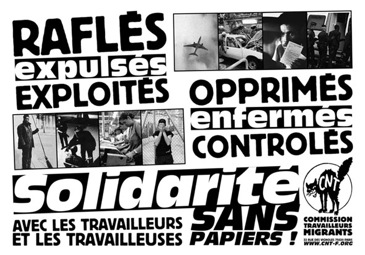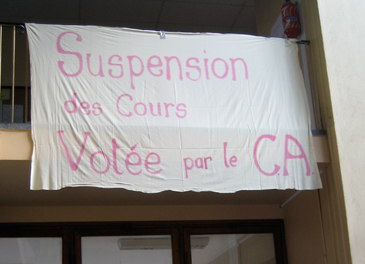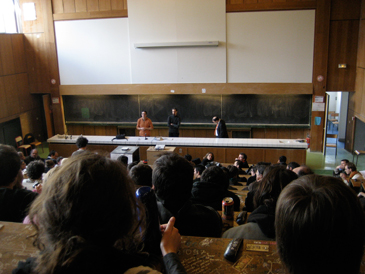
(continued from Part 1…)
My students and I had knocked on the door of the Éloignement office of the Préfecture in Nantes. The woman who answered asked us what we wanted and why we were there. My students said, “We came to learn about the Préfecture and to ask you what éloignement means.” After we established the understanding that it was indeed a strange situation for us to be asking her this question, she remarked that it was ironic that of all the offices in the Préfecture, we would be knocking on hers. She explained to us that she oversaw the deportation of migrants sans-papiers (undocumented immigrants). She was apprehensive when she opened the door because the people who come to her office are in the situation of imminent deportation or they are activists who come to protest on the immigrants’ behalf. She said that as a victim of aggression, she found her job sometimes stressful. However, she had worked in the same office for fifteen years and would stay on.
After leaving, the students and I talked about the exchange that took place. What was necessary for the conversation to have even happened was the establishment of rapport or mutual trust. However, one student noted that she didn’t feel comfortable identifying herself as an artist when talking with the woman. As artists are often associated with liberal political views, the woman might have questioned our motives for talking with her and been less forthcoming about what is admittedly a sensitive subject in France. However, this raised an ethical dilemma. Did it count as lying or withholding the truth for us not to tell her that we were artists? But we were not there to judge or condemn her. We arrived at her door due to our curiosity, and she had respected it by speaking with us.
The next week, we considered the question of documentation. Specifically, how does the presence of a camera affect an exchange between individuals? These days, people are often nervous in the presence of a camcorder because they are afraid of appearing on YouTube. Perhaps some exchanges can only take place off camera. In an earlier conversation, we had talked about the use of video by activists during protests to document instances of police brutality. One student expressed doubt about this kind of “speaking truth to power.” She explained that she had participated in a protest in which she and others were standing with linked arms with scarves tied under their eyes to hide their identities. In response, policemen pulled their scarves down and took photographs of each of their faces. Given the ubiquity of surveillance cameras mounted in public spaces, it is in some ways surprising that people are more nervous about cameras wielded by other ordinary citizens.
Documentation can take a number of forms, including photography, video, writing, and oral histories (recorded or told in passing conversations). We talked about what is gained and lost by allowing an experience to maintain its own integrity or by committing it to documentation. In both cases, the live moment of interaction can never be replaced (this can also be said of performance) but it is in the retelling or mediation of an experience that makes it possible to share it with others, and hopefully generate dialogue and other meanings.


We decided to test out these ideas by returning to the nearby university campus, this time with a video camcorder in hand. At the campus entrance gate, we saw a poster announcing an open debate between faculty and students regarding the government’s proposed reforms to higher education policy (which includes eliminating a financial program) and the decision of the majority of students and faculty to go on strike. Some of the students shot video footage and did some informal interviews with students and professors. Another student had a long conversation with a lab technician about his job and the relationship between art and science.
We were interested in pursuing the question of this relationship further. Last week, a friend of one of the students, who is currently studying physics at the university, gave us an introductory lesson on Einstein’s theory of relativity. We spoke about the relationship between conceptual art and physics in terms of using abstract models to represent invisible forces. And how perhaps Marcel Duchamp is the art historical equivalent of Albert Einstein.
In the workshop, we often start with identifying our common questions and concerns (artistic and social), and looking for ways to address them outside of the classroom, often with other people. Sometimes it’s a matter of being in the right place at the right time, and at other times, it’s a matter of responding spontaneously to the circumstances at hand. Now we’re trying to figure out together how to translate these experiences and observations into the gallery to share with an audience. We already know something will be lost in the white cube, but hopefully something will be gained as well.



